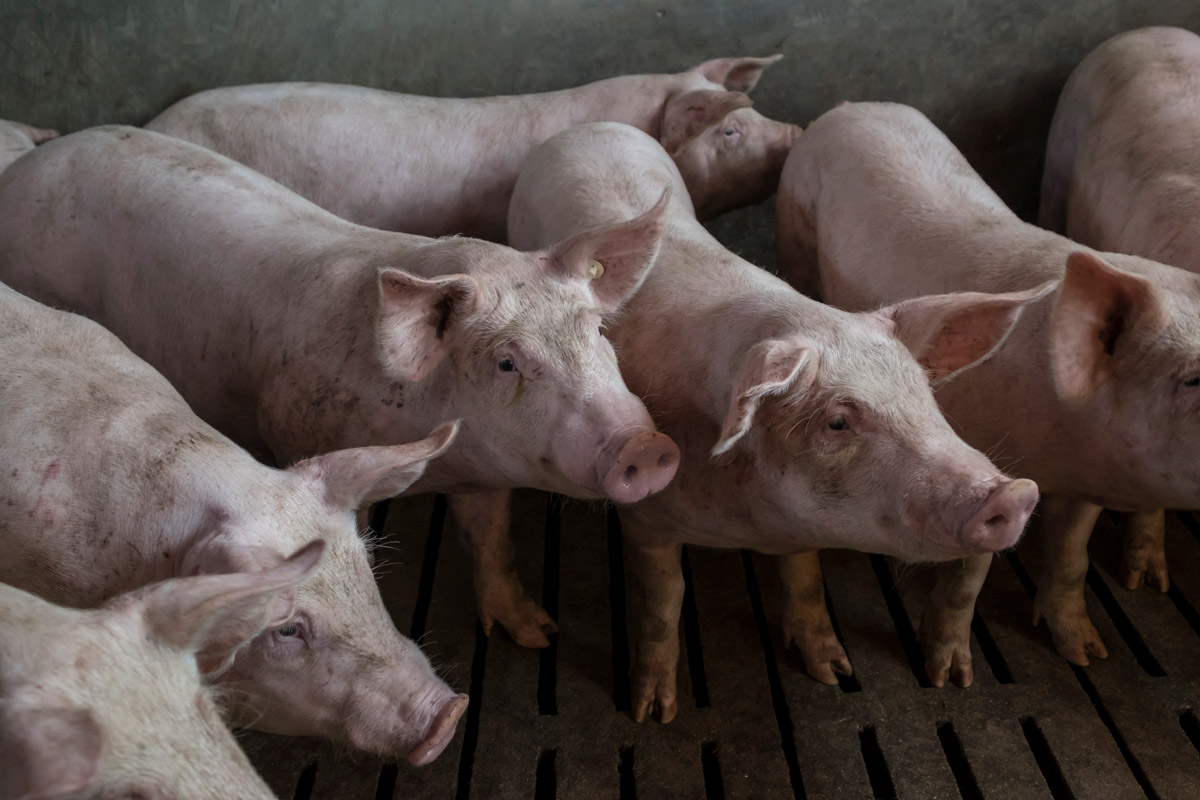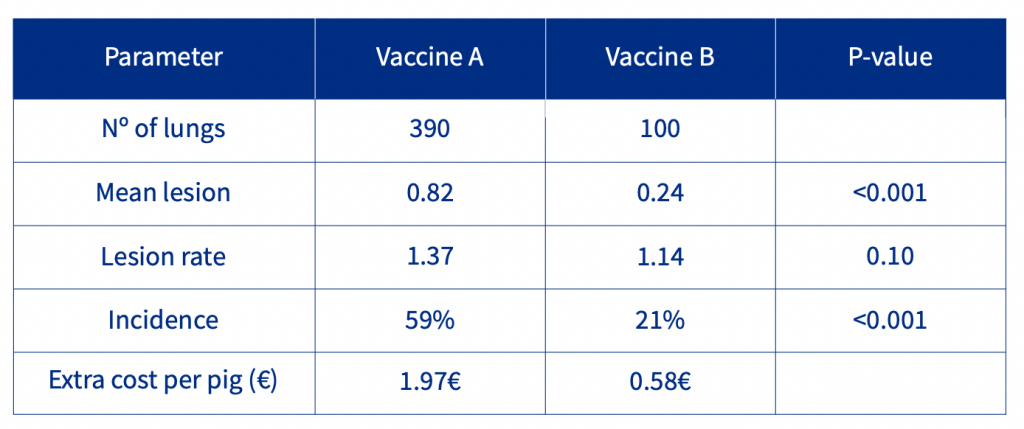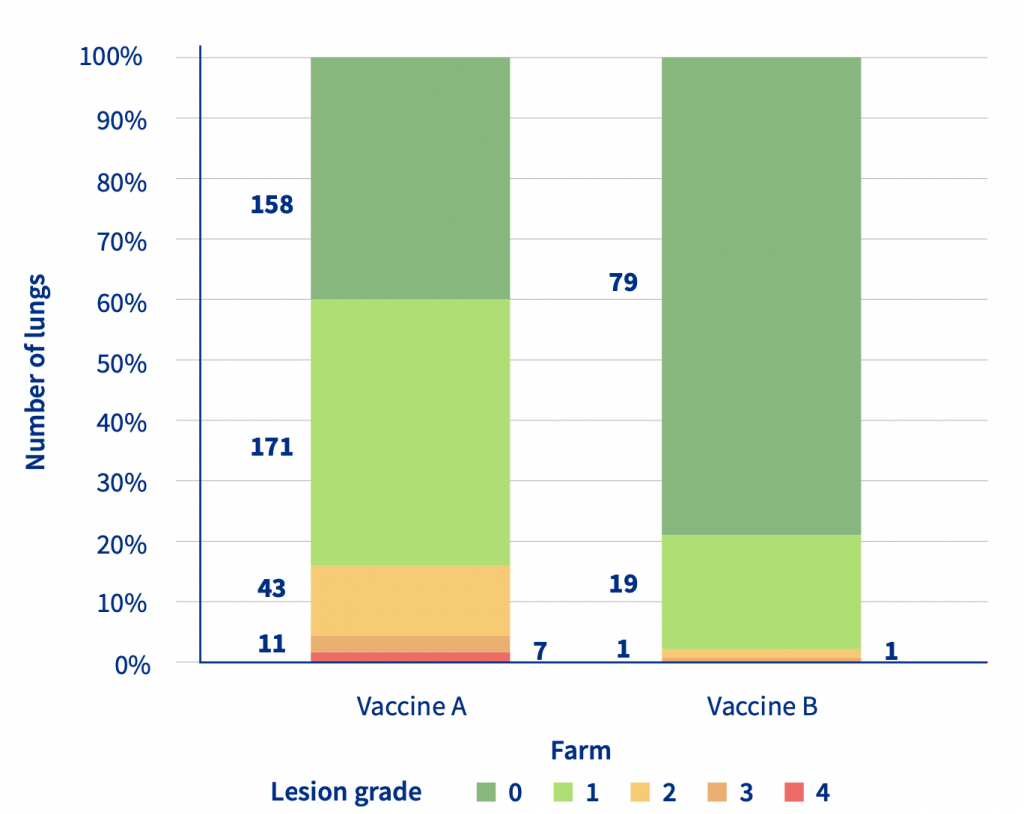
Comparative trial of lung lesions associated with Mycoplasma hyopneumoniae at slaughter in pigs vaccinated with different Mhyo vaccines in Peru
Mycoplasma hyopneumoniae (Mhyo) is the primary agent involved in enzootic pneumonia (EP) and one of the leading agents involved in Porcine Respiratory Disease Complex (PRDC). EP directly impacts the productive and economic performance of swine farms, reducing the average daily weight gain and increasing the conversion ratio, and consequently increasing the days that the pigs have to stay on the farm to reach the final slaughter weight1.
Introduction
The aim of this study was to compare lung lesions associated with Mhyo at slaughter when applying different Mhyo/PCV2 vaccines in pigs from Peru.
Materials and methods
A farrowing-to-finish farm of 1,500 sows in Peru, with circulation of Mhyo that was using an intramuscular vaccine against Mhyo of 2 ml per dose (Vaccine A) and switched to Mhyosphere® PCV ID (Vaccine B), an intradermal vaccine against Mhyo and PCV2, all in one, in 0.2 ml per dose. Apart from the change in the vaccine used, there were no other notable changes in management or treatment on the farm.
The lung lesions of pigs given Vaccines A and B were monitored at the slaughterhouse. The assessment of the lesions was done by the same person and with a blinded method, so that the evaluator did not know which vaccine had been administered in each case. The following parameters were analyzed: lesion incidence (lungs [%] with lesion), mean lesion (mean lesion grade among all lungs), and lesion rate (mean grade among all affected lungs). The modified Madec system was used to evaluate the lung lesions2,3. Moreover, the economic cost was calculated based on the number of lungs on each grade based on Straw et al.4
Statistical analysis was performed using the R software program.
Results
The mean lesions consistent with Mhyo were reduced from 0.82 to 0.24 with Vaccine B (p<0.001) (Table 1), which means a reduction of 70.7 %. Moreover, the lesion rate decreased from 1.37 to 1.14, and the incidence from 59% to 21% (p<0.001) with a significant reduction of 64.4%. Finally, the extra cost per pig due to Mhyo lesions, went from 1.97 € to 0.58 €

Table 1. Lung parameters by vaccine treatment and statistical analysis.
The distribution of the lung lesion grades (Figure 1) was different with the two vaccines, being lower with Vaccine B, with less than 25% of animals on grade 1, 2 or 3. Furthermore, Vaccine B had no animals on grade 4.

Figure 1. Distribution of the animals by lesion grade and vaccine.
Discussion and Conclusion
The new intradermal vaccine against Mhyo and PCV2, Mhyosphere® PCV ID (Vaccine B), significantly reduced the mean lesion and the incidence of Mhyo-lung lesions up to the time of slaughter compared to Vaccine A, and consequently decreased the extra cost per pig associated with Mhyo, which is very important to keep the economic productivity of swine farms.
Acknowledgement
The authors wish to thank the company GRANJA ISAMISA – PERU.
References
1. Pieters M. and Maes D. Chapter Mycoplasmosis (863-883) Diseases of Swine, Eleventh Edition. Edited by Jeffrey J. Zimmerman et al. (2019) John Wiley & Sons, Inc. Published 2019 by John Wiley & Sons, Inc.
2. Christensen G, Sorensen V, Mousing J (1999) Diseases of the respiratory system. In: Diseases of Swine, 8th Edit., B Straw, SD ‘Allaire, W Mengeling, DJ Taylor, Eds., Iowa State University Press, Ames, pp. 913e940.
3. Madec F, Kobisch M (1982) Bilan lesionnel des poumons de porcs charcutiers à l’abattoir [Assessment of lung lesions in fattening pigs at the slaughterhouse]. Journees de la Recherche Porcine [Swine Research Conference], 14, 405e412.
4. Straw BE, Tuovinen VK, Bigras-Poulin M. Estimation of the cost of pneumonia in swine herds. J Am Vet Med Assoc. 1989 Dec 15;195(12):1702–1706.

